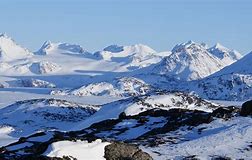(单词翻译:单击)
Part of the problem was that Croll's computations suggested that the most recent ice age occurred eighty thousand years ago, whereas the geological evidence increasingly indicated that Earth had undergone some sort of dramatic perturbation much more recently than that. Without a plausible explanation for what might have provoked an ice age, the whole theory fell into abeyance. There it might have remained for some time except that in the early 1900s a Serbian academic named Milutin Milankovitch, who had no background in celestial motions at all—he was a mechanical engineer by training—developed an unexpected interest in the matter. Milankovitch realized that the problem with Croll's theory was not that it was incorrect but that it was too simple.
在一定程度上,问题在于克罗尔的计算认为,最后一次冰川期出现在8000年前,但是地质学证据越来越表明,地球在比3000年近得多的一段时期内曾经历过某种严重的摄动。不对造成一个冰川时代的原因作出合理的解释,整个理论就没法站住脚。要不是一位名叫米卢廷·米兰柯维契的塞尔维亚学者的出现这个问题本来会存在一段时间。米兰柯维契根本没有研究天体运动的背景——他是一个训练有素的机械工程师——但他在20世纪初突然对这一问题产生了兴趣。他发现,克罗尔的理论的问题并不是它不正确,而是它太简单。

As Earth moves through space, it is subject not just to variations in the length and shape of its orbit, but also to rhythmic shifts in its angle of orientation to the Sun—its tilt and pitch and wobble—all affecting the length and intensity of sunlight falling on any patch of land. In particular it is subject to three changes in position, known formally as its obliquity, precession, and eccentricity, over long periods of time. Milankovitch wondered if there might be a relationship between these complex cycles and the comings and goings of ice ages. The difficulty was that the cycles were of widely different lengths—of approximately 20,000, 40,000, and 100,000 years, but varying in each case by up to a few thousand years—which meant that determining their points of intersection over long spans of time involved a nearly endless amount of devoted computation. Essentially Milankovitch had to work out the angle and duration of incoming solar radiation at every latitude on Earth, in every season, for a million years, adjusted for three ever-changing variables.
地球在空间运动时,不仅轨道的长度和形状会有所变化,而且朝向太阳的角度——它的倾斜度、偏侧度和离心度,也会有规律地发生变化,所有这些都影响了照射到地面任何一点的阳光的时间长度和强度。尤其是,地球在漫长的时间内要经历三种位置变化,即所谓的黄道交角、岁差和偏心度。米兰柯维契觉得,这些周期性的复杂变化与冰川期的产生和消退也许存在某种关系。困难在于,这种周期性交化的时间跨度相差过大——有的大约2万年,有的4万年,还有的10万年,差不多每个周期的差别都长达几千年——这就意味着,要想确定它们在漫长的时间段里的交叉点,必须经过几乎是无休止的精心演算。最主要的是,米兰柯维契必须计算出,100万年来,随着上述三种因素的不断变化,阳光在每一季节照射地球上每一纬度的角度和持续时间。


